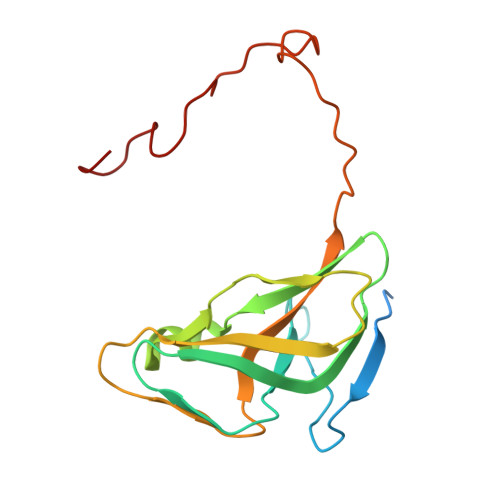Active site of mycobacterial dUTPase: structural characteristics and a built-in sensor.
Varga, B., Barabas, O., Takacs, E., Nagy, N., Nagy, P., Vertessy, B.G.(2008) Biochem Biophys Res Commun 373: 8-13
- PubMed: 18519027
- DOI: https://doi.org/10.1016/j.bbrc.2008.05.130
- Primary Citation of Related Structures:
2PY4 - PubMed Abstract:
dUTPases are essential to eliminate dUTP for DNA integrity and provide dUMP for thymidylate biosynthesis. Mycobacterium tuberculosis apparently lacks any other thymidylate biosynthesis pathway, therefore dUTPase is a promising antituberculotic drug target. Crystal structure of the mycobacterial enzyme in complex with the isosteric substrate analog, alpha,beta-imido-dUTP and Mg(2+) at 1.5A resolution was determined that visualizes the full-length C-terminus, previously not localized. Interactions of a conserved motif important in catalysis, the Mycobacterium-specific five-residue-loop insert and C-terminal tetrapeptide could now be described in detail. Stacking of C-terminal histidine upon the uracil moiety prompted replacement with tryptophan. The resulting sensitive fluorescent sensor enables fast screening for binding of potential inhibitors to the active site. K(d) for alpha,beta-imido-dUTP binding to mycobacterial dUTPase is determined to be 10-fold less than for human dUTPase, which is to be considered in drug optimization. A robust continuous activity assay for kinetic screening is proposed.
- Laboratory of Genome Metabolism and Repair, Institute of Enzymology, Hungarian Academy of Sciences, Karolina ut 29, H-1113 Budapest, Hungary.
Organizational Affiliation:



















